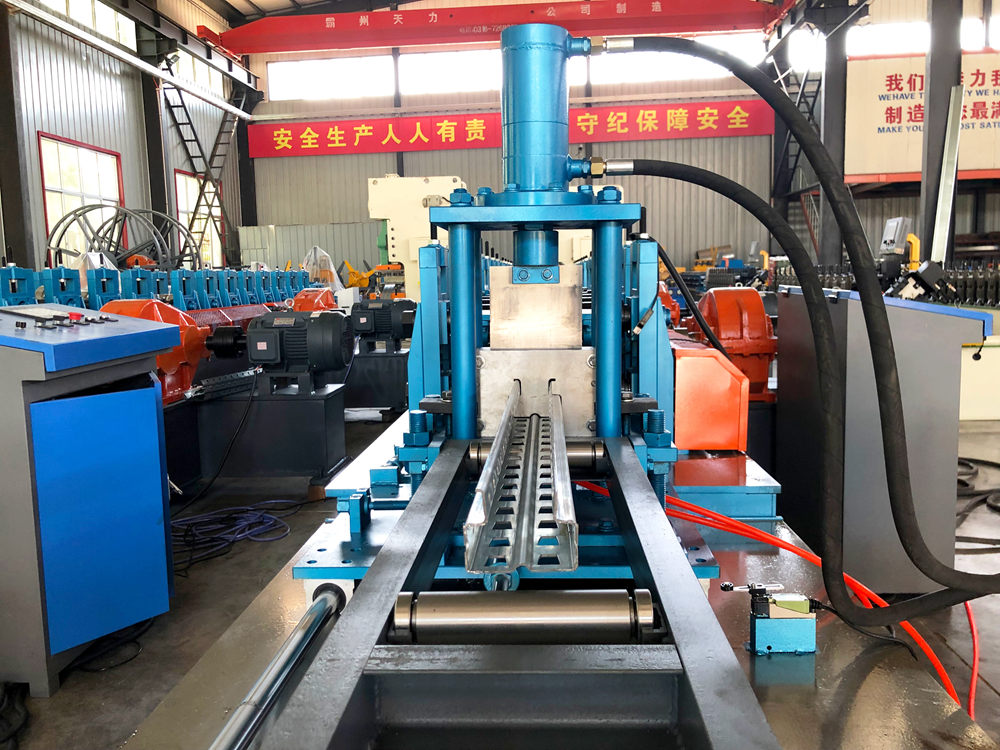
Stud and Track Rolling Machine An Overview
The manufacturing industry is at the core of modern economy, continuously evolving with advanced technologies that promise enhanced efficiency and productivity. One such technology that has garnered significant attention is the stud and track rolling machine. This machine is an integral part of metal fabrication processes, particularly in the production of tracks and studs used in various applications, including construction, automotive, and aerospace sectors.
A stud and track rolling machine is an industrial machine designed to create studs and track profiles from metal strips or coils. It employs a series of rollers and dies to shape the metal into desired forms, ensuring that the final products meet stringent quality specifications. The rolling process not only allows for the precise shaping of metal but also enhances its mechanical properties, making the products more robust and suitable for demanding applications.
Working Principle
The working principle of a stud and track rolling machine is based on the mechanics of metal forming. The machine typically consists of a feed mechanism, a rolling unit, and a cutting unit. The feed mechanism guides the metal strip into the rolling area where it is passed between a series of rollers. Each roller is specially designed to create a specific contour or profile in the metal.
As the metal passes through these rollers, it undergoes plastic deformation, which means it is reshaped without breaking. The configuration of the rollers can be adjusted based on the profile specifications required. After the rolling process, the shaped stud or track is cut into individual pieces as per the predefined lengths. This process ensures high accuracy and reduces waste, making it an economically viable solution for manufacturers.
Applications
Stud and track profiles made using the rolling machine have a myriad of applications. In construction, they are essential components used in the framing of buildings. They provide structural support and help in establishing walls, roofs, and ceilings. The strength and lightweight nature of these profiles make them favorable in reducing overall construction costs.
In the automotive industry, studs and tracks are employed in the assembly of vehicles. They are used in the body of the car, reinforcing joints and connections, which ultimately contribute to the vehicle's durability and safety. The ability of stud and track rolling machines to produce customized shapes and sizes also helps automotive manufacturers meet specific design requirements.

Additionally, the aerospace sector benefits from the precision and reliability of products manufactured by rolling machines
. The lightweight and strong components produced are crucial for aircraft, where every ounce counts towards fuel efficiency and safety.Advantages of Using Stud and Track Rolling Machines
1. Efficiency The continuous rolling process allows for high-speed production, which significantly reduces manufacturing time compared to traditional methods.
2. Cost-Effective The reduction of waste and the ability to use less material results in lower production costs. Furthermore, the longevity of the products reduces replacement and repair expenses.
3. Versatility Stud and track rolling machines can be adjusted to create various profiles, making them suitable for multiple industries and applications.
4. Quality Assurance The use of advanced technology and precise engineering ensures that products meet stringent quality standards, which is critical in sectors like automotive and aerospace.
5. Automation Potential Many modern rolling machines come equipped with automation features, allowing for processes to be controlled precisely and minimizing the chance of human error.
Conclusion
The stud and track rolling machine represents a significant advancement in the realm of manufacturing technology. Its ability to produce strong, lightweight, and accurately shaped components makes it indispensable in various industries. As the demand for efficiency and customization in manufacturing continues to rise, the relevance of stud and track rolling machines is sure to grow. Investing in this technology not only enhances production capabilities but also sets the stage for innovation and improved product offerings across multiple sectors. As industries evolve, the stud and track rolling machine will undoubtedly play a crucial role in shaping the future of manufacturing.